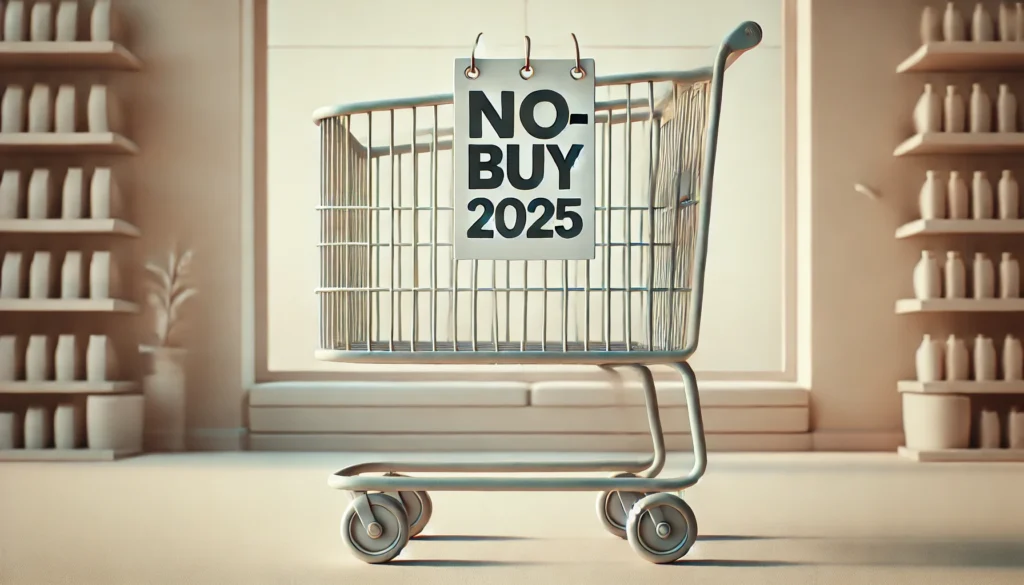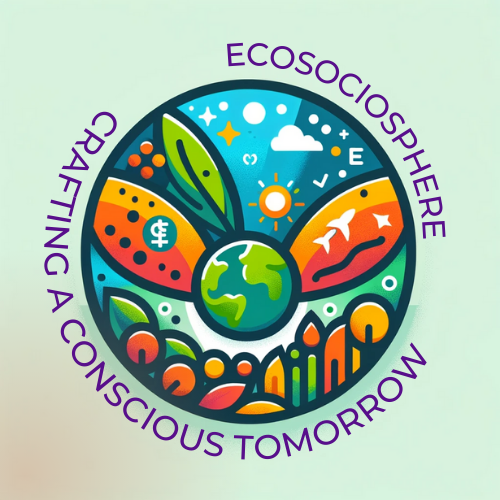Fun Fact: The average person sees up to 10,000 ads per day—most of which try to convince you to buy something you don’t actually need.
It’s 2025, and the hottest trend right now? Not buying anything at all. Yes, you read that right.
The ‘No-Buy 2025’ Movement is turning heads, emptying shopping carts, and shaking the very core of modern consumerism. In an era of next-day delivery and endless “add to cart” temptation, thousands across the globe have decided to take a radical leap—they’re not buying anything non-essential for an entire year. Not a new phone. Not another pair of shoes. Not even that beautifully packaged face serum you never actually use.
It may sound extreme. But is it, really? Or are we just too used to spending without thinking?
Why the ‘No-Buy 2025’ Movement Exists
To understand the ‘No-Buy 2025’ movement, you have to understand what it’s reacting to: a world where buying is no longer a necessity—it’s a compulsion.
Consumerism, once driven by need, is now a cultural default. You feel bored, you shop. You feel sad, you shop. You feel successful? You shop to reward yourself.
According to Statista (a global data analytics company), global e-commerce sales are expected to cross USD 6.3 trillion in 2025. But here’s the kicker—much of what we buy ends up unused, unloved, or in a landfill.
The ‘No-Buy’ movement is a rebellion. A reset. A refusal to participate in the hamster wheel of overconsumption. It’s saying: enough.
The Movement in Action: What It Looks Like
The rules vary depending on the individual. But generally, people pledge to avoid all non-essential purchases for a set time, often the entire year. Essentials like groceries, medical care, and hygiene products are allowed. The rest? Off-limits.
Here’s what’s typically included in the “No” list:
- Clothing
- Shoes
- Tech and gadgets
- Home décor
- Makeup and skincare (unless replacing something)
- Impulse online purchases
- Subscription boxes
Participants often document their journeys on social media, turning what was once private into a powerful public protest.

Stories from the No-Buy Frontlines
Jaya, 31, Hyderabad:
“I didn’t realise how addicted I was to shopping until I stopped. I used to buy clothes every month ‘just because’. Now I’m learning to live with what I have—and I feel so much more content.”
Akshay and Megha, a Mumbai-based couple:
“We did No-Buy 2025 together. Instead of gifting each other things, we’re gifting time—movie nights at home, cooking together, weekend walks. Our relationship is better for it.”
Shweta, 26, Jaipur:
“As a beauty blogger, I was constantly buying products. When I paused in 2025, I started reviewing what I already owned—and shockingly, so did my followers. They loved the honesty.”
The Psychology of Overconsumption
We buy because we’ve been trained to. Marketers know exactly how to manipulate emotion: scarcity triggers urgency, discounts create artificial value, and packaging creates desire.
Every notification from Flipkart (an Indian e-commerce company) or Amazon (an American multinational online retail giant) is carefully timed and worded to nudge you into that dopamine-fueled decision: Buy now.
But like any high, the rush fades. Then comes the guilt, the clutter, and the never-ending cycle.
The ‘No-Buy 2025’ movement interrupts that cycle. It rewires our brain to ask questions before buying:
- Do I need this?
- Can I borrow, mend, or reuse?
- Why do I want this?
And sometimes, the answer is more emotional than practical. We buy to fill holes in our identity, soothe insecurities, or match the illusion of others’ “perfect” lives online.
The Environmental Angle: Buying the Planet into Crisis
This isn’t just about personal peace. It’s about planetary survival.
- Fast fashion, driven by impulse buying, contributes to 10% of all global greenhouse gas emissions.
- Every year, 92 million tonnes of clothing are discarded globally.
- The electronics industry is responsible for over 50 million tonnes of e-waste annually.
- Packaging waste, especially plastic, is choking our oceans.
When we stop buying, we stop feeding the industries that exploit labour, deplete resources, and destroy ecosystems.
But Can an Entire Year of “Not Buying” Work in India?
In India, the No-Buy movement may seem like a Western import. But frugality and mindful consumption are deeply rooted in our culture. Think of how our parents or grandparents reused sarees, stitched old shirts into mop cloths, or kept dabbas (boxes) going for decades.
Ironically, we’re re-learning what we once knew well: how to live with less.
The No-Buy 2025 challenge may look different here:
- Buying fewer but better-quality items
- Supporting local artisans instead of fast fashion
- Repairing instead of replacing
- Thrifting and swapping instead of shopping for new
What You Gain When You Stop Buying
Here’s what people say they’ve gained:
- Clarity: Fewer choices mean fewer distractions.
- Savings: Many save thousands or lakhs by the end of the year.
- Confidence: You learn to value yourself outside of what you wear or own.
- Time: No more aimless online scrolling or weekend mall hauls.
- Gratitude: You begin to appreciate what you already have.
How to Join the No-Buy 2025 Movement
Interested? Here’s how to start:
- Define Essentials: Make a list of what’s allowed and what’s not.
- Audit Your Habits: What triggers your buying urges—boredom, emotion, trends?
- Unsubscribe & Unfollow: Reduce digital temptation.
- Track Progress: Write down what you didn’t buy each week.
- Celebrate Intentionally: Reward yourself with experiences, not purchases.
Will Corporations Panic?
Not all of them. Many companies are adapting.
Patagonia, an American outdoor clothing company, promotes repairing old clothes.
The Body Shop, a UK-based ethical cosmetics brand, encourages the use of refillable products.
Some brands are even supporting “buy less” campaigns as part of their Corporate Social Responsibility (CSR) initiatives. The smart ones know that conscious consumers are the future.
But let’s not be fooled—many will resist. The No-Buy movement threatens their model. And that’s exactly why it matters.
Conclusion: We Are Not What We Buy
The No-Buy 2025 Movement is a mirror—and a megaphone. It reflects the madness of our times and speaks loudly against it.
It asks: Who are you, really, when you stop buying?
Are you still cool without the new phone?
Still confident in the same kurta?
Still content in the same home, with the same mug, reading the same book for the tenth time?
If the answer is yes, then maybe—just maybe—you’ve broken free.
Because the greatest act of rebellion in 2025 might not be a protest. It might be the quiet courage of simply saying: “I’m good. I don’t need more.”
Author’s Note:
I’m not anti-shopping. I love a good pair of jeans and a strong cup of café-bought coffee. But I also believe in balance, and right now, we’re wildly off it. No-Buy 2025 isn’t the end of consumption. It’s the beginning of conscious consumption.
G.C., Ecosociosphere contributor.




